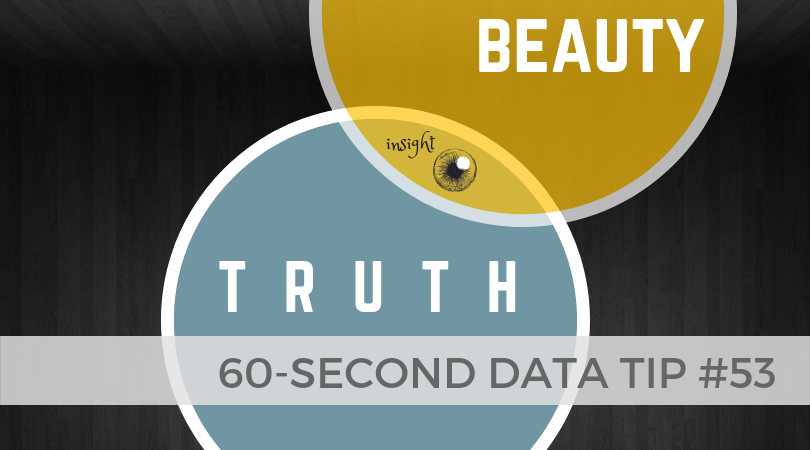Real data people care about truth, not beauty. More accurately, they care about evidence that might suggest a truth. So they don’t really embrace truth, just the pursuit of it. However, they don’t have any time for pursuing beauty. Indeed, they may see beauty as deception. A glossy chart or graph is the province of advertisers or advocates seeking to influence rather than to fully inform. As far as the look of displays of information, they advocate for clarity. They may embrace Tufte’s rule of reducing the "data-ink ratio" by removing unnecessary gridlines, labels, and what he calls “chartjunk” (i.e. non-informative elements) to let the data shine through. (For more on Tufte, see Data Tip #11.)
I’m here to argue — both to “real” data people and the rest of us — that we should not discount beauty when visualizing data. Indeed, it might be worth our while to pursue it as we pursue truth. The reason? Well, because we like pretty things. If that sounds like a flimsy explanation, stick with me a bit longer.
Research evidence suggests that visually attractive things make us happy. (See “The Beauty-Happiness Connection” in The Atlantic for more on this.) And a positive mood, in turn, helps to expand our working memory, which allows us to process more information. So rather than being deceptive window dressing, beauty can actually more deeply engage the viewer in the pursuit of truth.
How can we make data more beautiful? Stay tuned. This is the topic of next week’s data tip.
See other data tips in this series for more information on how to effectively visualize and make good use of your organization's data.

